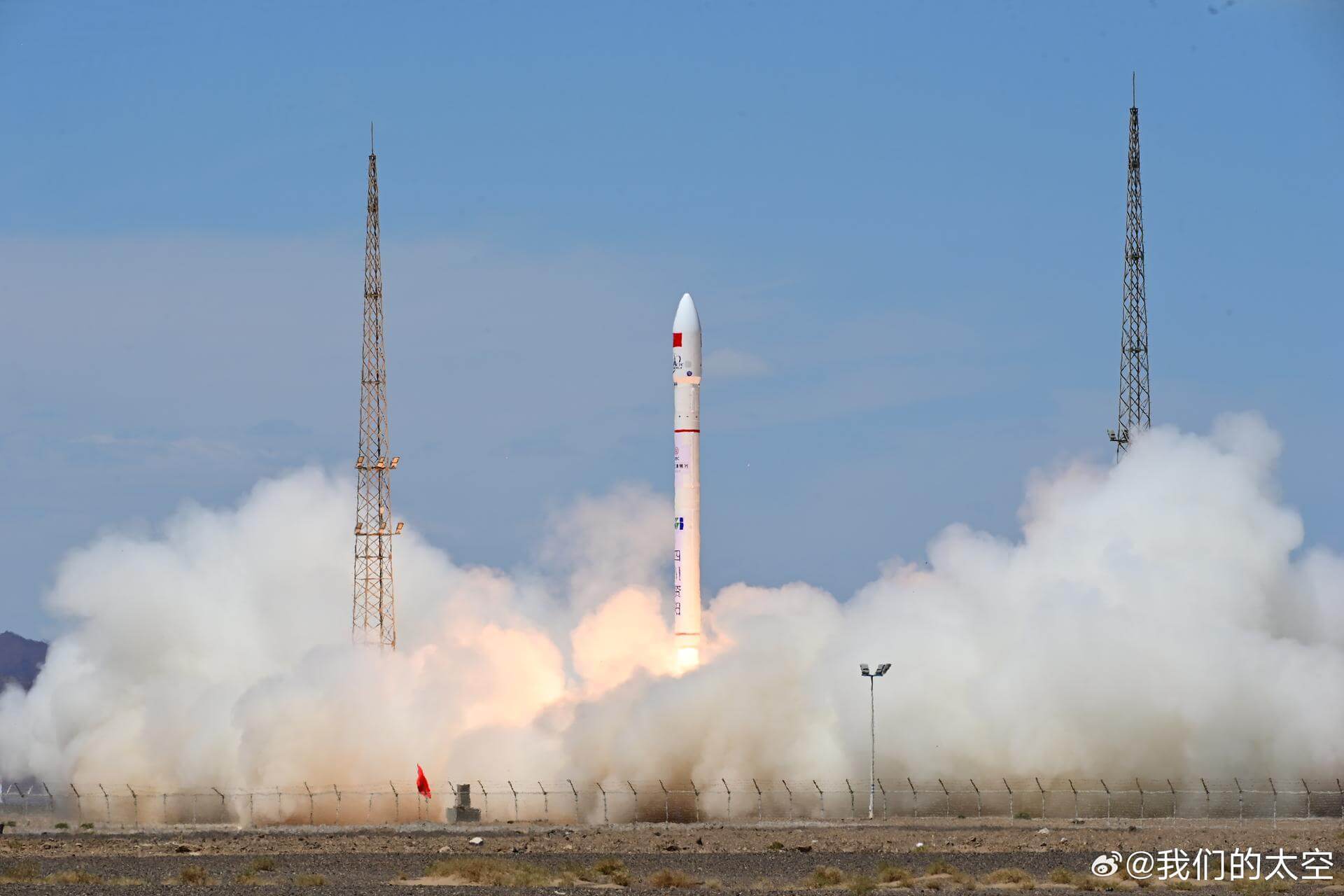· space brief · 6 min read
Space Brief 11 Jun 2025
Today's Space Brief covers a major partnership in space tech distribution, China's orbital refueling preparations under U.S. scrutiny, recent U.S. defense budget reveals, and an exciting hyperspectral imagery release from Xplore.

📄Top Stories
In a significant development for space and defense technologies, Apogee Semiconductor has announced a new partnership to expand its distribution capabilities. Meanwhile, China’s move towards an orbital refueling test has drawn attention due to the presence of U.S. surveillance satellites. On the financial front, the Pentagon’s RDT&E budget for FY26 has been revealed, highlighting investment in next-gen systems. Additionally, Xplore has released its first hyperspectral imagery from its XCUBE-1 satellite, marking a key milestone in remote sensing.
📰Detailed Coverage
Apogee Semiconductor Expands Distribution through New Partnership
Apogee Semiconductor is collaborating with ALTER Technology and doEEEt.com to broaden the availability of its advanced technology offerings. This partnership aims to enhance the distribution of space and defense-grade technologies, leveraging ALTER’s extensive network and expertise in the sector.
By joining forces, these companies are poised to streamline access to critical technologies designed for extreme environments, which is vital given the increasing reliance on advanced electronic systems in both space and defense. For satellite enthusiasts, this partnership underscores the importance of robust technology platforms in enabling precise satellite operations and tracking.
Read the full story: SpaceNews
Chinese Spacecraft and the Geopolitical Dance in Orbit
China is gearing up for an ambitious orbital refueling test involving its Shijian satellites, an advanced maneuver in geostationary orbit. This activity, however, is taking place under the watchful eyes of U.S. surveillance satellites, illustrating the geopolitical dynamics at play in space.
The mission indicates China’s growing capabilities in space operations, potentially enhancing the longevity and functionality of its satellite fleet. Observers of satellite movements will find this development intriguing, as it highlights the intricate maneuvering and strategic objectives that characterize modern space exploration efforts.
Read the full story: SpaceNews
Pentagon’s FY26 Budget Unveils Next-Gen System Investments
The Pentagon has unveiled its RDT&E budget for FY26, spotlighting substantial investments in next-generation technologies. Key allocations address advancements in directed energy weapons, autonomous systems, and enhanced satellite technologies to fortify national defense.
These investments reflect a strategic emphasis on staying ahead in evolving military technologies, ensuring readiness across various defense operations. This budget disclosure is of particular interest to stakeholders in the defense and aerospace sectors who track the intersection of innovation and military needs.
Read the full story: Breaking Defense
Xplore’s Hyperspectral Imagery: A Leap in Remote Sensing
Xplore Inc. has proudly released hyperspectral imagery from its first satellite, XCUBE-1, part of its ongoing remote-sensing constellation. This release showcases the company’s capability in high-resolution spectral data collection, benefiting a wide range of applications from environmental monitoring to resource management.
The introduction of such technology emphasizes the growing importance of detailed, multi-band imagery in satellite-based observations. For users of our satellite tracking platform, these advancements offer new dimensions in data analysis and monitoring capabilities.
Read the full story: SpaceNews
HASC Leaders Propose New Acquisition Reform Plan
House Armed Services Committee leaders have proposed a new reform plan aimed at accelerating the defense acquisition process. The initiative seeks to eliminate hurdles in weapons procurement, enhancing efficiency in delivering new systems.
This reform underscores the need for agility in a rapidly advancing threat landscape, ensuring that U.S. defense capabilities are not hampered by bureaucratic delays. Stakeholders are closely watching this move, anticipating significant impacts on defense-related technological developments.
Read the full story: Breaking Defense
SpaceNews Celebrates New Venture with Event Success
SpaceNews has launched a new business offering and successfully hosted a custom event, the Hakuto-R Mission 2 live lunar landing watch party. This event marks a milestone in SpaceNews’ efforts to converge media and customer engagement, enhancing its role in the space community.
This initiative reflects a broader trend of media companies deepening their involvement with space missions, providing unique platforms for public engagement and education. The event’s success demonstrates the heightened interest in space activities and the value of media-facilitated interactions.
Read the full story: SpaceNews
🛰️Satellite Spotlight
- Satellite Name: AUREOLE 3
- NORAD ID: 12848
- Launch Date: September 21, 1981
- Mission: AUREOLE 3 was designed for scientific exploration of the Earth’s magnetosphere, providing valuable data about space weather phenomena.
- Orbit: Low Earth Orbit (LEO)
- Operator: Institute of Space Research (IK)
- Fun Fact: AUREOLE 3 was one of a series of Soviet satellites aimed at studying the Earth’s magnetic field, contributing to our understanding of space weather and its impacts on our planet.
Track this satellite in real-time on our web app: Track AUREOLE 3
🌌Space Weather
Space weather conditions are currently quiet.
R0 - S0 - G0
Next 24 Hours: In the coming day, satellite operators can expect a stable environment, with no risks of radio blackouts or solar radiation storms. Ground-based radars and telescopes will also enjoy uninterrupted functionality due to these calm conditions. For satellite communication users, the outlook is similarly positive, as there are no anticipated disruptions. However, LEO satellites may experience minimal drag, keeping operations steady.
Beyond: Looking ahead, from 09 June to 05 July 2025, we can expect solar activity to trend towards R1-R2 (Minor-Moderate) levels, influenced by multiple active regions emerging from the Sun. While no proton events are predicted at geosynchronous orbit, the greater than 2 MeV electron flux will reach higher levels on specific dates (15-22 Jun, 26-29 Jun, and 02-04 Jul) due to recurrent coronal hole effects. Geomagnetic activity is also anticipated to be elevated, with possible G1 (Minor) geomagnetic storms occurring on 09 and 13 Jun, escalating to G2 (Moderate) storms on 14-15 Jun due to positive polarity coronal hole high-speed stream (CH HSS) impacts. Similarly, expect G1 to G2 conditions around 25-26 Jun due to negative polarity CH HSS influences. The rest of the period will likely remain quiet to unsettled.
🚀Upcoming Space Launches
June 11
- Rocket Lab Electron:
- The Mountain God Guards (iQPS Launch 3) from Rocket Lab Launch Complex 1, Mahia Peninsula, New Zealand (15:15 UTC) Synthetic aperture radar Earth observation satellite for Japanese Earth imaging company iQPS.
June 13
- SpaceX Falcon 9 Block 5:
- Starlink Group 15-6 from Vandenberg Space Force Base, CA, USA (01:46 UTC) A batch of satellites for the Starlink mega-constellation—SpaceX’s project for space-based Internet communication system.
- SpaceX Falcon 9 Block 5:
- Starlink Group 12-26 from Cape Canaveral Space Force Station, FL, USA (11:45 UTC) A batch of satellites for the Starlink mega-constellation—SpaceX’s project for space-based Internet communication system.
June 14
- China Aerospace Science and Technology Corporation Long March 2D:
- Unknown Payload from Jiuquan Satellite Launch Center, People’s Republic of China (07:48 UTC) Details TBD.
June 16
- United Launch Alliance Atlas V 551:
- Project Kuiper (KA-02) from Cape Canaveral Space Force Station, FL, USA (17:25 UTC) Project Kuiper is a mega constellation of satellites in Low Earth Orbit that will offer broadband internet access, managed by Kuiper Systems LLC, a subsidiary of Amazon.
June 17
- SpaceX Falcon 9 Block 5:
- Starlink Group 15-9 from Vandenberg Space Force Base, CA, USA (00:51 UTC) A batch of satellites for the Starlink mega-constellation—SpaceX’s project for space-based Internet communication system.
June 19
- Russian Space Forces Angara A5/Briz-M:
- Kosmos (Unknown Payload) from Plesetsk Cosmodrome, Russian Federation (03:00 UTC) Unidentified payload for the Russian military.
June 20
- China Aerospace Science and Technology Corporation Long March 3B/E:
- Unknown Payload from Xichang Satellite Launch Center, People’s Republic of China (12:27 UTC) Details TBD.
June 21
- SpaceX Falcon 9 Block 5:
- Transporter 14 (Dedicated SSO Rideshare) from Vandenberg Space Force Base, CA, USA (00:00 UTC) Dedicated rideshare flight to a sun-synchronous orbit with dozens of small microsatellites and nanosatellites for commercial and government customers.
Note: Launch dates and times are subject to change due to technical or weather considerations.

Maurice Stellarski




